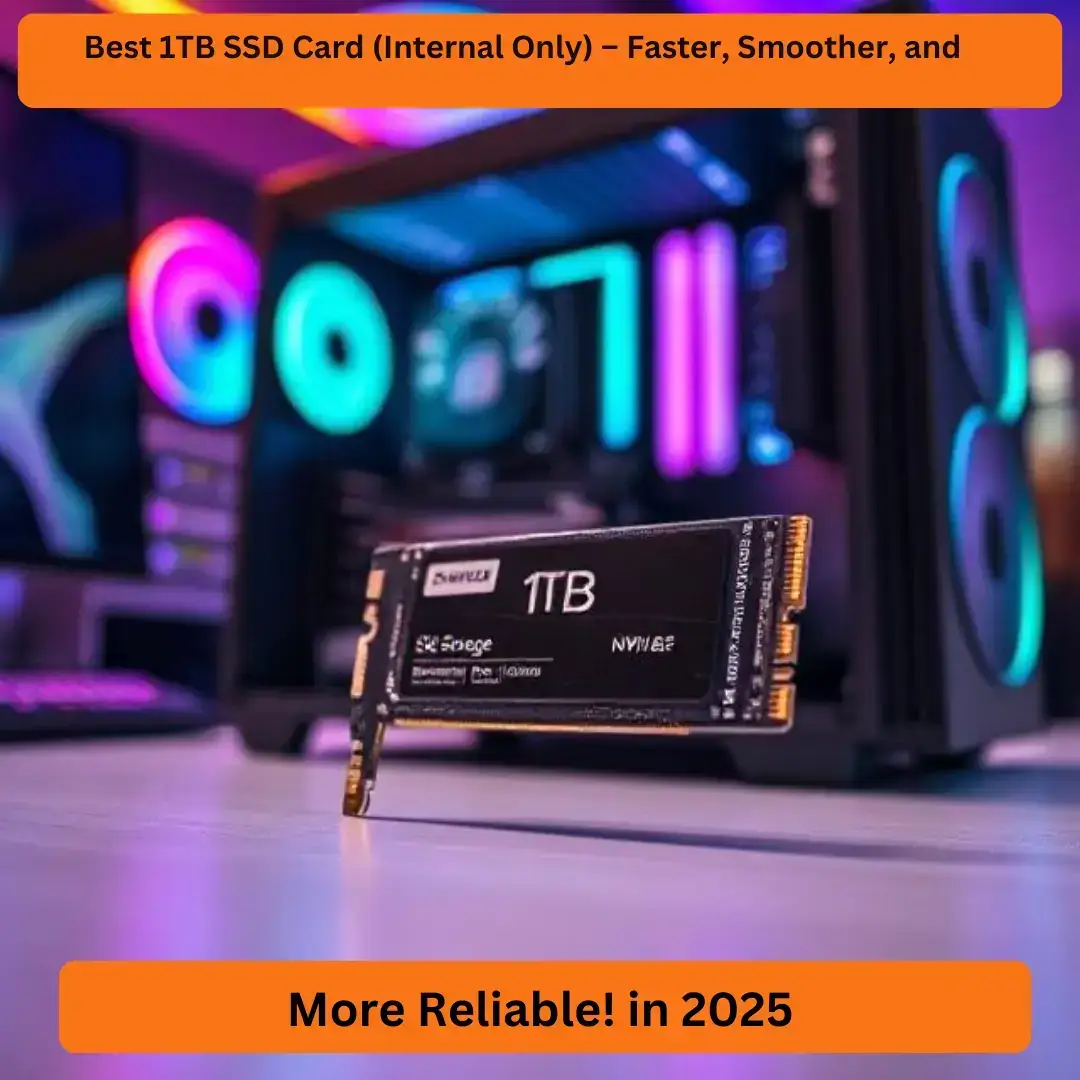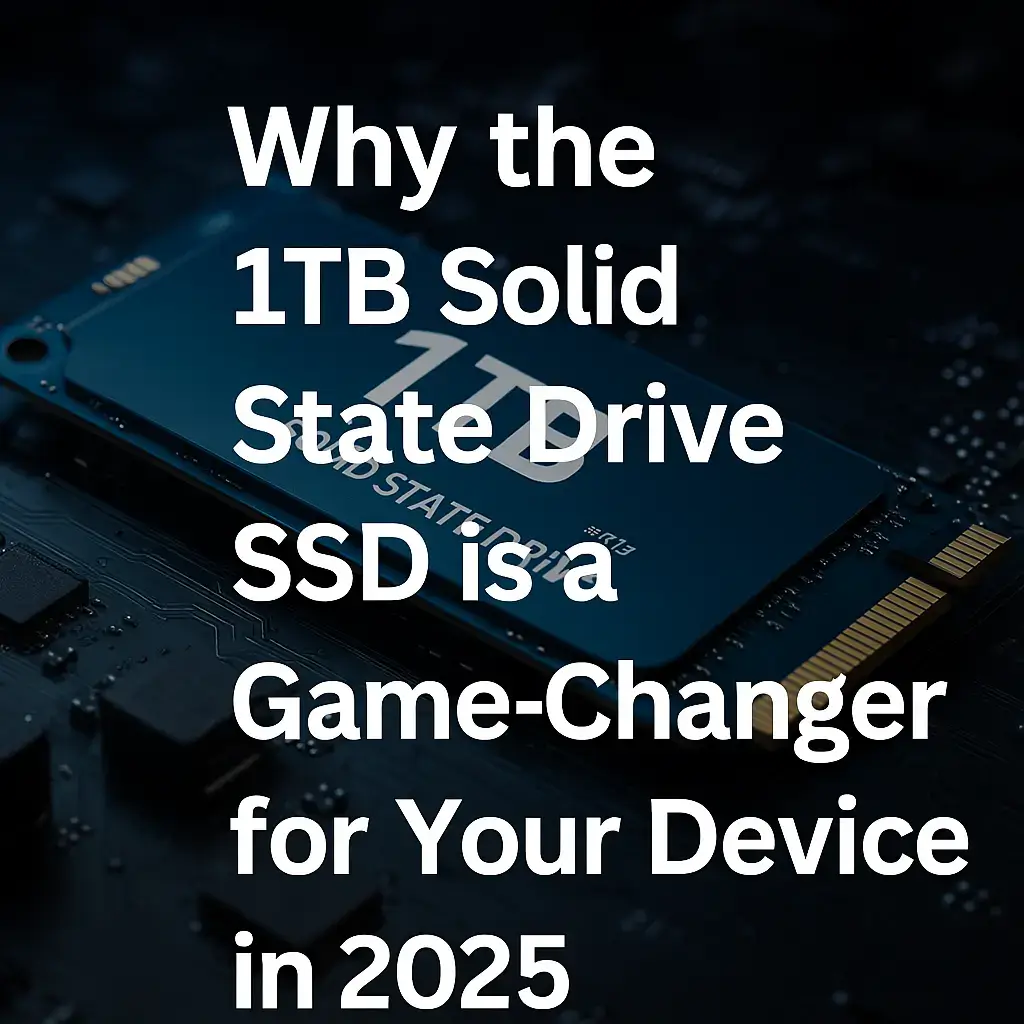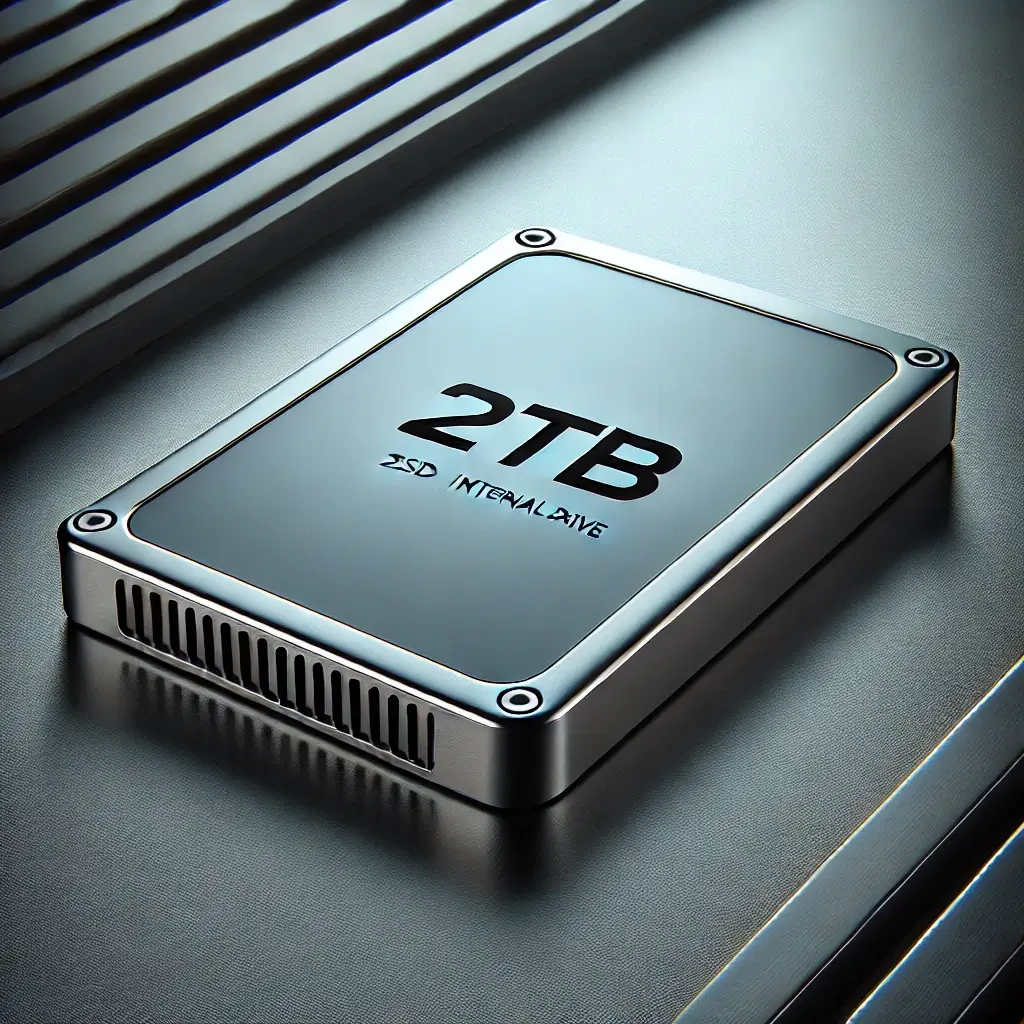1. Introduction: Why You Need an Internal 1TB SSD Card
Many people still believe that a 1TB SSD card is too expensive or unnecessary. “Why not just stick with a traditional HDD? It’s cheaper and does the job,” they say. But here’s the truth: Hard drives are outdated. If you’re still using one, you’re missing out on lightning-fast speeds, better performance, and a more reliable storage solution. Whether you’re a gamer, a professional, or just someone tired of slow load times, upgrading to a 1TB solid-state drive card is a game-changer.
Gone are the days when internal SSD cards were a luxury. Prices have dropped significantly, and today, you can find an affordable 1TB SSD card that offers faster boot times, smoother multitasking, and overall better efficiency. If you’re upgrading your gaming laptop, desktop PC, or workstation, investing in a high-performance 1TB SSD is one of the smartest choices you can make for speed and reliability.
2. What is an Internal 1TB SSD Card?
A 1TB SSD memory card is a solid-state storage device designed to replace or complement traditional hard drives. Unlike HDDs, which rely on spinning disks, SSDs use flash memory to store and retrieve data at incredible speeds. This means no waiting for your system to boot, files to load, or games to start.
An internal 1TB SSD is installed inside your laptop or desktop, directly connected to the motherboard. It acts as the primary storage for your operating system, software, and files. On the other hand, an external SSD connects via USB and is mainly used for backup or extra storage. If you’re looking for a 1TB SSD for gaming laptops, video editing, or everyday computing, an internal SSD is the best choice for speed and efficiency.
How Does a 1TB SSD Compare to an HDD?
Many users still wonder whether an HDD is a better option simply because it’s cheaper. However, an SSD offers significantly better performance in all aspects. An HDD relies on mechanical spinning disks to read and write data, which makes it slow, prone to wear and tear, and less energy efficient. In contrast, an SSD operates on flash memory technology, ensuring near-instantaneous data access, minimal power consumption, and greater durability.
A key feature of a 1TB SSD is its speed. While an HDD may reach read and write speeds of 100-150 MB/s, an SSD can go as high as 3,500 MB/s depending on the type. This speed improvement means your computer boots up almost instantly, applications launch without delays, and file transfers happen in seconds rather than minutes. Additionally, SSDs are completely silent, unlike HDDs that produce clicking or whirring noises.
Pros and Cons of a 1TB SSD
The biggest advantage of an SSD is performance. Users who switch to an SSD often report that their computers feel brand new, even if the hardware is a few years old. SSDs are also significantly more reliable since they lack moving parts, reducing the risk of mechanical failure. This makes them ideal for gaming, video editing, and high-performance computing tasks.
However, there are some downsides. Despite price drops, SSDs are still more expensive than HDDs per gigabyte of storage. For users who require massive storage, an HDD may still be necessary as a secondary drive. Additionally, while modern SSDs have improved significantly in lifespan, they still have a finite number of write cycles, meaning they may degrade over time with excessive use. However, for the average user, this is unlikely to be a concern for many years.
3. Benefits of Upgrading to a 1TB Internal SSD
One of the biggest misconceptions about upgrading to a 1TB SSD is that only hardcore gamers or tech enthusiasts need it. In reality, anyone using a computer regularly will benefit. Many assume that an SSD upgrade won’t make a noticeable difference, but the truth is that it transforms the entire user experience. A 1TB SSD eliminates slow boot times, enhances multitasking, and improves overall system responsiveness. Whether you’re a gamer, content creator, or everyday user, switching to SSD storage is one of the best decisions you can make.
A 1TB SSD significantly boosts speed. When compared to a traditional HDD, SSDs reduce loading times by more than half, making applications and games launch almost instantly. This is particularly useful for those working with large files, such as video editors and graphic designers. Additionally, SSDs consume less power, which extends the battery life of laptops and prevents overheating issues.
Beyond speed, reliability is another major advantage. Unlike HDDs, which have mechanical components prone to failure, SSDs have no moving parts. This makes them more durable and resistant to shock, ensuring data integrity over time. Whether you’re carrying your laptop around or using a high-performance desktop, a 1TB SSD guarantees consistent and long-lasting performance.
4. Types of Internal 1TB SSD Cards: Which One Do You Need?
Choosing the right internal SSD depends on your specific needs. Not all SSDs are created equal, and understanding the differences is crucial. The most common types are NVMe, SATA, and M.2 SSDs.
NVMe SSDs are the fastest option available. They connect directly to the motherboard via PCIe lanes, offering speeds up to 3,500 MB/s. This makes them ideal for gaming PCs, professional workstations, and power users who need extreme speed. If you’re looking for the best performance, an NVMe SSD is the way to go.
SATA SSDs are more affordable and offer great performance compared to traditional hard drives. They are the best option for users who need a balance between speed and cost. While not as fast as NVMe, they still provide a significant performance boost over HDDs, making them perfect for everyday computing and office use.
M.2 SSDs are compact and powerful. They come in both NVMe and SATA versions, so it’s important to check compatibility with your system. Many modern laptops and slim desktops use M.2 SSDs to save space while delivering high-speed performance. If you have a device that supports M.2 storage, upgrading to a 1TB SSD can improve efficiency without taking up additional space.
When selecting an SSD, consider what you need it for. Gamers will benefit from NVMe for faster load times, while office users and students can opt for SATA SSDs for an affordable performance boost. Professionals handling large media files should prioritize speed and go for NVMe SSDs to ensure seamless workflow. Whatever your use case, an internal 1TB SSD will provide a noticeable improvement in overall performance and responsiveness.
5. Best 1TB Internal SSD Cards for Performance & Budget
Many people assume that all SSDs are the same, but that’s not true. The right 1TB internal SSD can make a huge difference in performance, whether you’re a gamer, content creator, or just need a fast and reliable storage solution. Some SSDs prioritize speed, while others focus on affordability. Let’s break down the best options based on performance and budget.
Best High-Performance 1TB SSDs
If speed is your top priority, these SSDs are some of the best choices:
Samsung 970 EVO Plus
This SSD is a powerhouse when it comes to speed and reliability. With read speeds up to 3,500MB/s and write speeds of 3,300MB/s, it’s perfect for gamers, video editors, and power users. The NVMe interface ensures low latency and fast data transfers.
- Pros: Blazing-fast speeds, excellent durability, great for high-performance tasks.
- Cons: Slightly more expensive than budget options.
- Final Verdict: If you want top-tier performance, the Samsung 970 EVO Plus is worth every penny.
WD Black SN850
This SSD is built for serious gamers and professionals. It features PCIe Gen 4 technology, delivering speeds up to 7,000MB/s, making it one of the fastest SSDs available.
- Pros: Ultra-fast performance, great for high-end gaming and creative work.
- Cons: Requires a compatible motherboard for full speed.
- Final Verdict: Ideal for those who need cutting-edge speed and don’t mind paying a premium.
Best Budget 1TB SSDs
If you’re looking for an affordable SSD that still delivers solid performance, these options are perfect:
Crucial P3 Plus
This is one of the best budget NVMe SSDs. With read speeds up to 3,500MB/s, it’s fast enough for most users while being reasonably priced.
- Pros: Affordable, solid performance, great for general computing and gaming.
- Cons: Slower than premium SSDs, lacks advanced durability features.
- Final Verdict: A great option for those who want an SSD upgrade without breaking the bank.
Kingston NV2
If you’re looking for a no-frills SSD that gets the job done, the Kingston NV2 is a solid choice. It offers read speeds up to 3,500MB/s and is one of the most affordable 1TB SSDs available.
- Pros: Budget-friendly, decent speeds, easy to install.
- Cons: Lacks DRAM cache, which may affect sustained performance.
- Final Verdict: Perfect for casual users who need fast storage at a low price.
6. How to Choose the Right 1TB Internal SSD Card
Choosing the right SSD can feel overwhelming, especially with so many options available. Many people believe that the most expensive SSD is always the best, but that’s not true. The right SSD depends on your needs, whether you’re looking for speed, storage capacity, or affordability.
Key Factors to Consider
1. Speed & Performance
If you’re a gamer or professional, go for an NVMe SSD with at least 3,000MB/s read speeds. PCIe Gen 4 SSDs offer even faster speeds, but make sure your motherboard supports them. If you’re just upgrading from an HDD for everyday use, even a budget NVMe SSD will feel like a huge improvement.
2. Compatibility
Not all SSDs work with every computer. Check your motherboard’s available slots. Most modern laptops and desktops support NVMe M.2 SSDs, but older systems may require a SATA SSD.
3. Reliability & Lifespan
Look for SSDs with a high TBW (terabytes written) rating. The higher the TBW, the longer the SSD will last. Brands like Samsung, WD, and Crucial have great reliability records.
4. Price vs. Value
Don’t just go for the cheapest option. A mid-range SSD often provides the best balance between performance and cost. If you’re on a budget, consider a Crucial or Kingston SSD instead of high-end brands like Samsung or WD Black.
5. Storage Needs
Think about how much space you actually need. A 1TB SSD is ideal for most users, but if you store tons of videos, games, or large design files, you might need a 2TB SSD instead.
Final Verdict
Choosing the best 1TB internal SSD depends on your needs. If you want top-tier performance, go for the Samsung 970 EVO Plus or WD Black SN850. If you’re looking for a budget-friendly option that still offers great speed, the Crucial P3 Plus or Kingston NV2 are excellent choices. No matter what you choose, upgrading to an SSD will give your computer a massive performance boost.
7. How to Install a 1TB Internal SSD Card
Installing an SSD might seem complicated, but it’s actually pretty simple. Many believe they need a professional to do it, but with a little guidance, you can easily install a 1TB internal SSD yourself.
- Turn off your computer and unplug it from the power source.
- Open the case using a screwdriver.
- Locate the M.2 or SATA slot on your motherboard.
- Insert the SSD carefully into the slot.
- Secure it with a screw if required.
- Close the case, plug your computer back in, and boot up.
- Format and initialize the SSD through Disk Management in Windows or Disk Utility on macOS.
8. Common Myths About Internal 1TB SSD Cards
Many people believe SSDs wear out too quickly, but modern SSDs are built to last. Others think SSDs don’t make much of a difference compared to HDDs, but the speed boost is undeniable. Another common myth is that bigger SSDs slow down performance—this isn’t true. In fact, larger SSDs often perform better than smaller ones.
By switching to an SSD, you’re upgrading to faster speeds, better durability, and improved efficiency. Don’t let myths stop you from making the upgrade!
9. Where to Buy the Best Internal 1TB SSD Cards
One of the biggest myths about buying SSDs is that you should always get them from local stores. While that might seem like a good idea, online platforms often have better prices, deals, and a wider variety of options. Let’s explore the best places to buy a high-quality 1TB internal SSD.
Online Stores
- Amazon – One of the best places to buy SSDs, offering competitive prices, discounts, and customer reviews to help with your decision.
- Newegg – Great for tech enthusiasts looking for specific SSD models at discounted prices.
- Best Buy – Offers both online and in-store purchases, often with extended warranties and return policies.
- B&H Photo – A solid option for professionals looking for reliable storage solutions.
- Manufacturer Websites – Buying directly from brands like Samsung, Crucial, or WD ensures authenticity and warranty coverage.
Physical Stores
- Best Buy & Micro Center – Good for hands-on buyers who want to see the product before purchasing.
- Local Computer Shops – May have good deals, but prices are often higher than online retailers.
Buying online usually gives you the best combination of price and selection, but if you need an SSD immediately, a local store might be the better option.
10. Conclusion: Is a 1TB Internal SSD Worth It?
Many people hesitate before upgrading to a 1TB SSD, thinking they might not need that much space. But in today’s digital world, storage needs are increasing rapidly. Games, videos, software, and operating systems take up more space than ever. A 1TB SSD offers the perfect balance between performance, speed, and storage capacity.
If you’re a gamer, an SSD can drastically reduce loading times and improve gaming performance. For professionals, it ensures faster file transfers and efficient multitasking. Even for everyday users, switching from an HDD to an SSD means a noticeable boost in speed and responsiveness.
In short, a 1TB internal SSD is absolutely worth it. Whether you’re upgrading an old computer or building a new one, investing in an SSD will enhance your system’s overall performance and longevity. Don’t let outdated myths stop you—make the upgrade and experience the difference!




